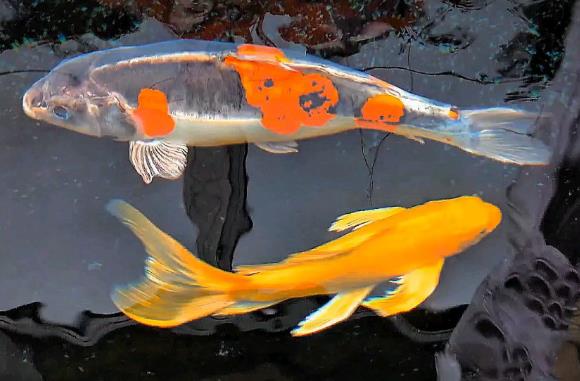If the koi carp stops moving, the following measures can be taken for rescue:
Check the water quality and temperature: The suitable water temperature range for koi carp is 18-28°C. If the water temperature is too low, the metabolism of the koi carp will slow down, resulting in a decrease in vitality. Use a heating rod to raise the water temperature to between 20-25°C and keep the water temperature constant. Avoid a large temperature difference caused by rapid heating. At the same time, change the water regularly to keep the water quality clean, and avoid not changing the water for a long time or large fluctuations in water quality.

Increase oxygen: Insufficient oxygen in the water will cause the koi carp to have difficulty breathing and lie at the bottom of the tank. You can increase the dissolved oxygen content in the water by installing an oxygen pump or changing the water regularly.
Check the health condition: If the koi carp is sick or infected with pathogens such as bacteria and parasites, it will show the phenomenon of lying at the bottom of the tank. Common diseases such as white spot disease, fungal disease, and gill rot will all affect the normal behavior of koi carp. Isolate the sick koi carp in a timely manner, stop feeding, increase oxygen, and raise the water temperature to 28°C. Add coarse salt for sterilization at a ratio of five per thousand. If the condition is severe, it is necessary to use drugs for immersion, such as yellow powder, gentamicin, oxytetracycline, etc., but pay attention to the concentration of the drugs to avoid drug damage.
Stress response treatment: When the environment changes too much, the koi carp will have a stress response and lie motionless at the bottom of the tank. You can add salt at a ratio of five per thousand to the fish tank, and add some povidone-iodine and thioether florfenicol for antibacterial disinfection. Generally, the little fish can recover in 3-4 days. If it still doesn't work, remember to change one-fifth of the water, continue to sterilize, and enhance the immunity.
Nutrition and disease treatment: If the koi carp stops moving due to malnutrition or disease, it is necessary to deal with it according to the specific situation. For example, adjust the feeding amount, expel internal parasites, etc.
The measures to prevent the koi carp from stopping moving include:
Keep the water quality clean: Change the water regularly to avoid problems such as loss of appetite and health issues caused by poor water quality.
Feed rationally: Avoid overfeeding, master the feeding amount well, and avoid indigestion.
Keep the environment stable: Try to avoid sudden environmental changes, and maintain the stability of parameters such as water temperature and pH value.
Disease prevention: Regularly check the health condition of the koi carp, and discover and deal with diseases in a timely manner.
